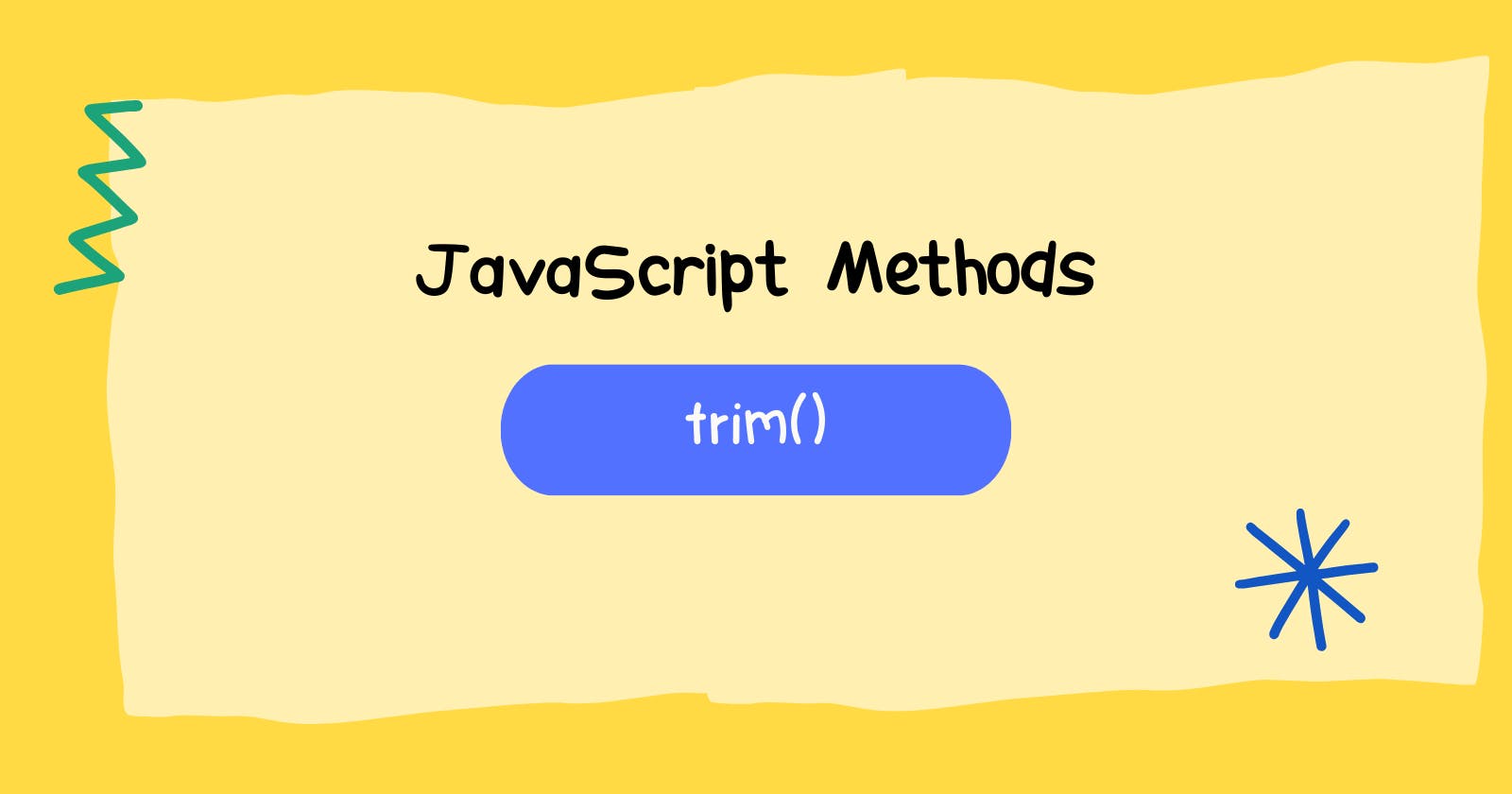In JavaScript, the trim() method is a built-in method for strings that removes whitespace from both ends of a string. Whitespace includes spaces, tabs, and newlines. The trim() method does not alter the original string; instead, it returns a new string with the whitespace removed.
Here's an example:
let originalString = " Hello, World! ";
let trimmedString = originalString.trim();
console.log("Original String: '" + originalString + "'");
console.log("Trimmed String: '" + trimmedString + "'");
In this example, the trim() method is used to remove the leading and trailing spaces from the originalString. The output will be:
Original String: ' Hello, World! '
Trimmed String: 'Hello, World!'
Here are some key points and additional details about the trim() method:
Return Value:
The
trim()method returns a new string with the leading and trailing whitespace removed.It doesn't modify the original string; instead, it creates and returns a new string.
Usage:
The
trim()method is often used to clean up user input from forms, where users might unintentionally enter extra spaces.It's useful when comparing or validating strings, as it ensures that any extraneous whitespace doesn't affect the comparison.
Whitespace Characters:
Whitespace characters removed by
trim()include space (' '), tab ('\t'), and newline ('\n').It doesn't remove whitespace within the string; it only trims leading and trailing spaces.
Browser Compatibility:
The
trim()method is widely supported in modern browsers and is part of the ECMAScript 5 (ES5) specification.For compatibility with older browsers, it's a good practice to check if the method is available before using it, or consider using polyfills if needed.
Related Methods:
- In addition to
trim(), there aretrimStart()andtrimEnd()methods introduced in ECMAScript 2019 (ES10) that specifically trim whitespace from the beginning and end of a string, respectively.
- In addition to
Example using trimStart() and trimEnd():
let stringWithWhitespace = " Hello, World! ";
let trimmedStart = stringWithWhitespace.trimStart();
let trimmedEnd = stringWithWhitespace.trimEnd();
console.log("Original String: '" + stringWithWhitespace + "'");
console.log("Trimmed Start: '" + trimmedStart + "'");
console.log("Trimmed End: '" + trimmedEnd + "'");
The output will be:
Original String: ' Hello, World! '
Trimmed Start: 'Hello, World! '
Trimmed End: ' Hello, World!'
Here's a breakdown of the output:
Original String: The original string contains leading and trailing spaces.
Trimmed Start: The
trimStart()method removes leading whitespace from the original string, resulting in a string without leading spaces.Trimmed End: The
trimEnd()method removes trailing whitespace from the original string, resulting in a string without trailing spaces.
In both cases, the original string itself is not modified. The trimStart() and trimEnd() methods return new strings with the respective leading or trailing whitespace removed.
Hope, you learned something useful about trim() method in this article. Now hit the like button and leave a comment about your thoughts on this and should I write articles about JavaScript methods or not?

